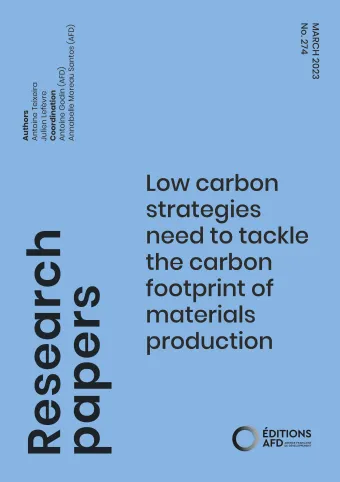Share the page
Low carbon strategies need to tackle the carbon footprint of materials production
Published on

Like Net-Zero GHG emissions (NZE) country goals which have recently multiplied, national low carbon strategies currently focus on reducing direct territorial emissions across sectors, such as domestic energy, transport, buildings and industry sectors. Doing so they do not tackle emissions embodied in imports and insufficiently emissions related to base carbon-intensive materials production which are used across sectors including for capital formation. However the carbon footprint of materials production (CFM) represents a high share of global emissions and is mostly embodied in imports in many rich countries. Here we develop a novel framework to assess and map the carbon footprint of materials at the country level in the present situation and in future scenarios. Replicable for other countries, our framework is applied to the case of France. We find that although territorial emissions from materials supply only stand for 53 MtCO2eq in 2015, the CFM amounts to 228 MtCO2eq, i.e. 3.4 tCO2e/cap with a high share of imported emissions.
Useful Information
-
Authors
-
Antoine TEIXEIRA, Julien LEFEVRE
-
Coordinators
-
Annabelle MOREAU-SANTOS, Antoine GODIN
-
Edition
-
274
-
Number of pages
-
25
-
ISSN
-
2492 - 2846
-
Collection
-
Research Papers
